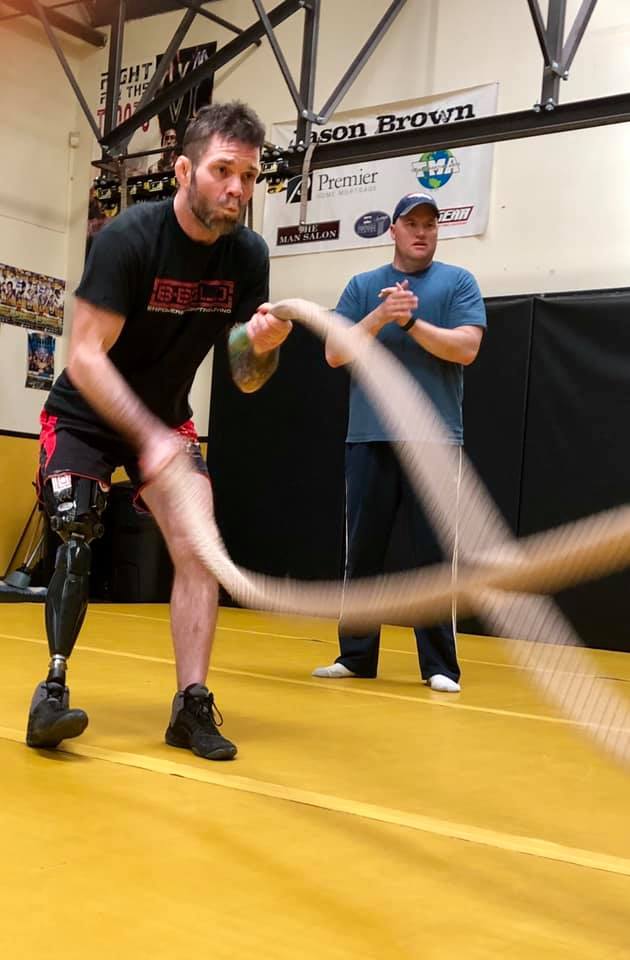In this installment of "Ask the TRX Doctor," Dr. Perkash fields a question from member Paul S. on the best TRX exercises for prevention of back pain, especially for someone who is short on time.
Question
I am a regular TRX user and affiliate, and I have the TRX Healthy Back DVD, and it is excellent. Like many people, I sit for many hours in front of my computer while working. Several years ago, I fell down a flight of stairs and broke one of the disks in my lower spine. After several months of suffering from sciatic pain, I had part of the disk removed, and I am doing fine now, thanks to a great surgeon and my TRX. As part of my rehab, I have been performing exercises on my TRX, and I believe it has helped to strengthen my spine and prevent back pain. But I am wondering, in your opinion, what are the best TRX exercises to prevent lower back pain and sciatica from occurring in the first place? What would be your top three TRX back exercises for someone who is short on time? Your response may prevent millions of people who are suffering from back pain!
Answer
It has come to be recognized in the medical community how important exercise, in general, is for longevity and general well being. Similarly, it is equally important to do exercises regularly to maintain a healthy back, especially as we get older. As we get older, many of the structures in our bodies slowly deteriorate. With the advent of MRI technology over the past 20 to 30 years, we have been able to more vividly observe disc degeneration as it occurs in the general population. This process occurs in all of us with each decade of life, usually beginning between ages 30 to 40. In some of us, discs can fail and bulge, protrude or fully herniate and cause pain. While disc degeneration is inevitable as we age, to one degree or another, low back pain is not.
It is understood that by strengthening the soft tissues (i.e. muscles, ligaments, tendons, etc) around the spine, the deeper, weaker structures have a lower likelihood of becoming painful. In other words, if the deeper structures in the spine can be well supported by other structures surrounding them, then there is a lower chance of pain and injury as we get older. These structures have been termed collectively as the “core” in the physical therapy and exercise realm. This is a rather broad term that encompasses soft tissue musculoskeletal structures surrounding virtually the entire spine and especially the lower back.
The important factor in deciding an exercise program is finding one that meets the needs, ability level and goals of an individual. For instance, the right exercise for a 20 year old who has never had back pain are not the same as a 70 year old with a history of lumbar degenerative disc disease with narrowing of the spinal canal (i.e. spinal stenosis). There are literally an infinite number of exercises that can be done at different vector angles using the TRX, and therefore, unique groups of exercises that should be tailored for any given person.
For anyone who has had a disc/back problem in the past, some guidance should be provided/solicited from their physical therapist and/or physician regarding their restrictions. Once this has been clearly established, then core stabilization exercises can be initiated. I wish I could simply provide you with a simple cook book answer of which three TRX exercises are “best” for the back. In contrast, I think the benefit of the TRX is that virtually every exercise that is done using the TRX activates the core musculature and therefore strengthens the lumbar spinal musculature either directly or indirectly. Indeed, the TRX is a significant component of my own exercise regimen.
Better advice is for anyone using the TRX or any other exercise equipment to consult a health professional or trainer to work towards an individualized exercise program based upon his/her needs, ability and goals. The TRX Biomechanics: Healthy Back DVD is an excellent guide, and progressions in this regard are literally limitless. It is not so much which specific exercises anyone does but rather how those exercises complement the rest of that individual’s personal exercise program. All core stabilization exercises should be part of a general cardiovascular, flexibility and strengthening exercise program.
In addition, ergonomic factors should be addressed. For anyone sitting in front of a computer, an appropriate ergonomic set-up should be ensured. Frequent stretching breaks should be taken every 30 to 60 minutes and last a few seconds. Prolonged sitting with proper ergonomics is tolerated more easily than even moderate sitting with poor ergonomics.
Although there are many back exercises someone can do with the TRX including the following:
- TRX Plank
- TRX Crunch
- TRX Pendulum
- TRX Mountain Climber
- TRX Pike
- TRX Low Row
- TRX Hamstring Runner
- TRX Torso Rotation
- TRX Hip Drop
- TRX Squat
- TRX Hip Press
- TRX Lunge
- TRX Standing Roll Out
The proper combination of these exercise for a given individual may vary for the reasons mentioned above, so start on the conservative side and progress or regress the intensity appropriately.
Have a question for the TRX Doctor? Email the Doc today! We’ll be featuring these Q&As as regular blog posts going forward.


